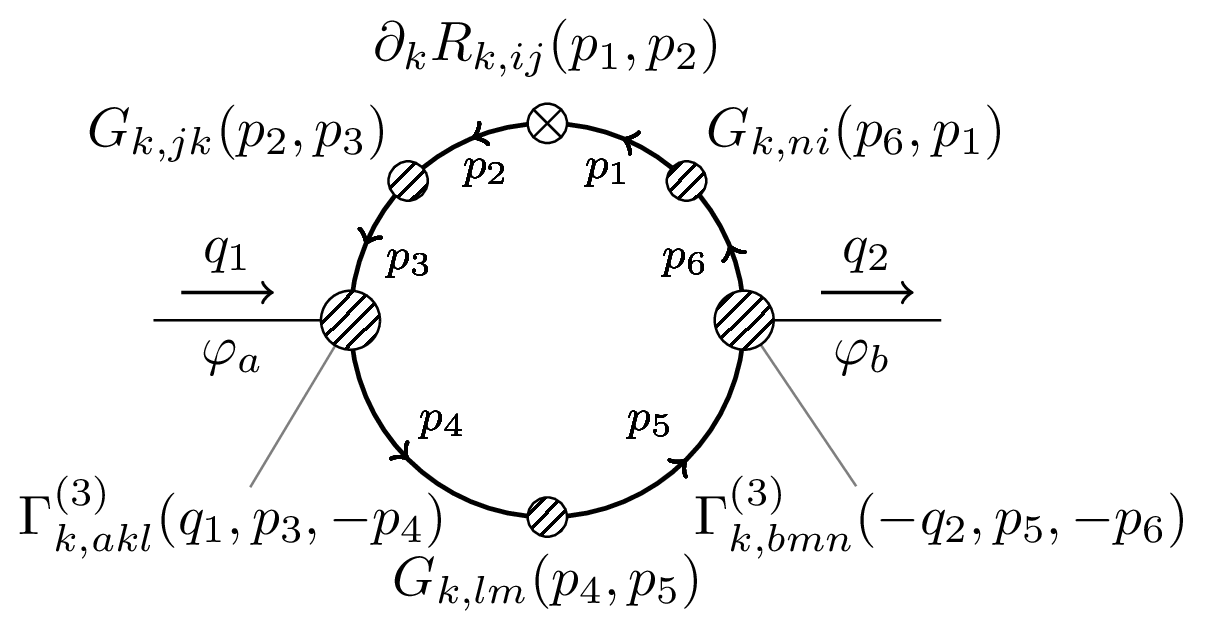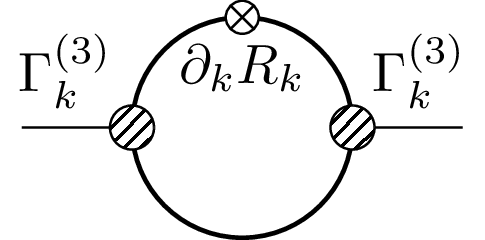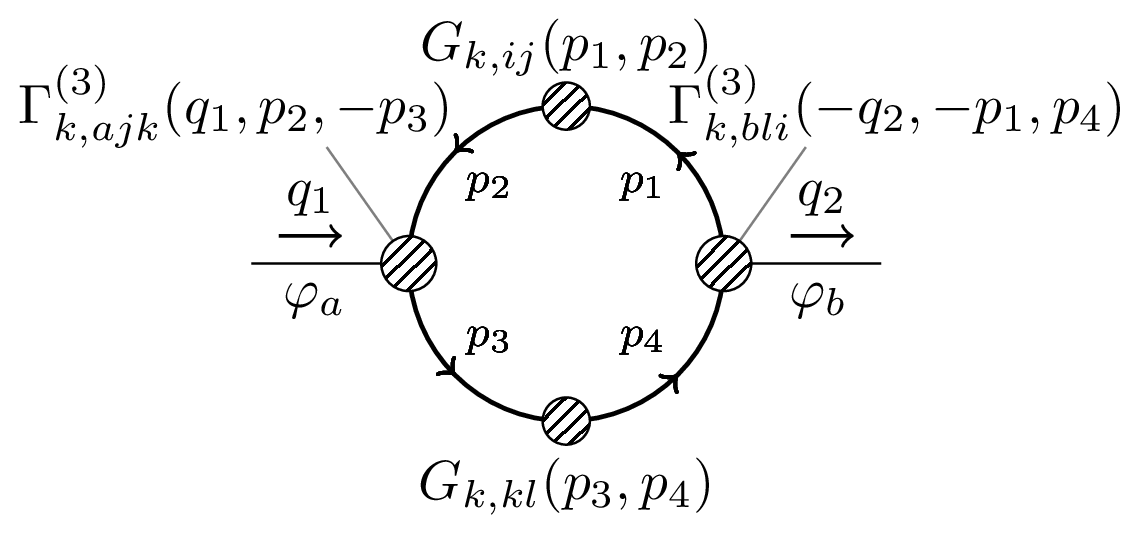Two-point propagator flow.
Edit and compile if you like:
% Two-point propagator flow\documentclass[tikz]{standalone}\usetikzlibrary{patterns,decorations.markings}\tikzset{cross/.style={fill=white,path picture={\draw[black] (path picture bounding box.south east) -- (path picture bounding box.north west) (path picture bounding box.south west) -- (path picture bounding box.north east);}},dressed/.style={fill=white,postaction={pattern=north east lines}},momentum/.style 2 args={->,semithick,yshift=5pt,shorten >=5pt,shorten <=5pt},loop/.style 2 args={thick,decoration={markings,mark=at position {#1} with {\arrow{>},\node[anchor=\pgfdecoratedangle-90,font=\footnotesize] {$p_{#2}$};}},postaction={decorate}},label/.style={thin,gray,shorten <=-1.5ex}}\def\lrad{5/4}\def\mrad{0.15*\lrad}\def\srad{0.1*\lrad}\begin{document}% Diagram 1\begin{tikzpicture}% Loop\draw[loop/.list={{0.0625}{6},{0.0625*3}{1},{0.0625*5}{2},{0.0625*7}{3},{0.0625*10}{4},{0.0625*14}{5}}] (0,0) circle (\lrad);\draw[cross] (0,\lrad) circle (\srad) node[above=5pt] {$\partial_k R_{k,ij}(p_1,p_2)$};\draw[dressed] (135:\lrad) circle (\srad) node[above left] {$G_{k,jk}(p_2,p_3)$};\draw[dressed] (45:\lrad) circle (\srad) node[above right] {$G_{k,ni}(p_6,p_1)$};\draw[dressed] (0,-\lrad) circle (\srad) node[below=3pt] {$G_{k,lm}(p_4,p_5)$};% External lines\draw (-2*\lrad,0) coordinate (xl) -- (-\lrad,0) node[pos=0.4,below] {$\varphi_a$};\draw[momentum] (-2*\lrad,0) -- (-1.25*\lrad,0) node[midway,above] {$q_1$};\draw (\lrad,0) -- (2*\lrad,0) coordinate (xr) node[pos=0.6,below] {$\varphi_b$};\draw[momentum] (1.25*\lrad,0) -- (2*\lrad,0) node[midway,above] {$q_2$};% Vertices\node at (-1.6*\lrad,-\lrad) (Gkail) {$\Gamma_{k,akl}^{(3)}(q_1,p_3,-p_4)$};\draw[label] (Gkail) -- (-\lrad,0);\draw[dressed] (-\lrad,0) circle (\mrad);\node at (2*\lrad,-\lrad) (Gkbde) {$\Gamma_{k,bmn}^{(3)}(-q_2,p_5,-p_6)$};\draw[label] (Gkbde.150) -- (\lrad,0);
Click to download: two-point.tex
Open in Overleaf: two-point.tex
This file is available on tikz.netlify.app and on GitHub and is MIT licensed.
See more on the author page of Janosh Riebesell..








